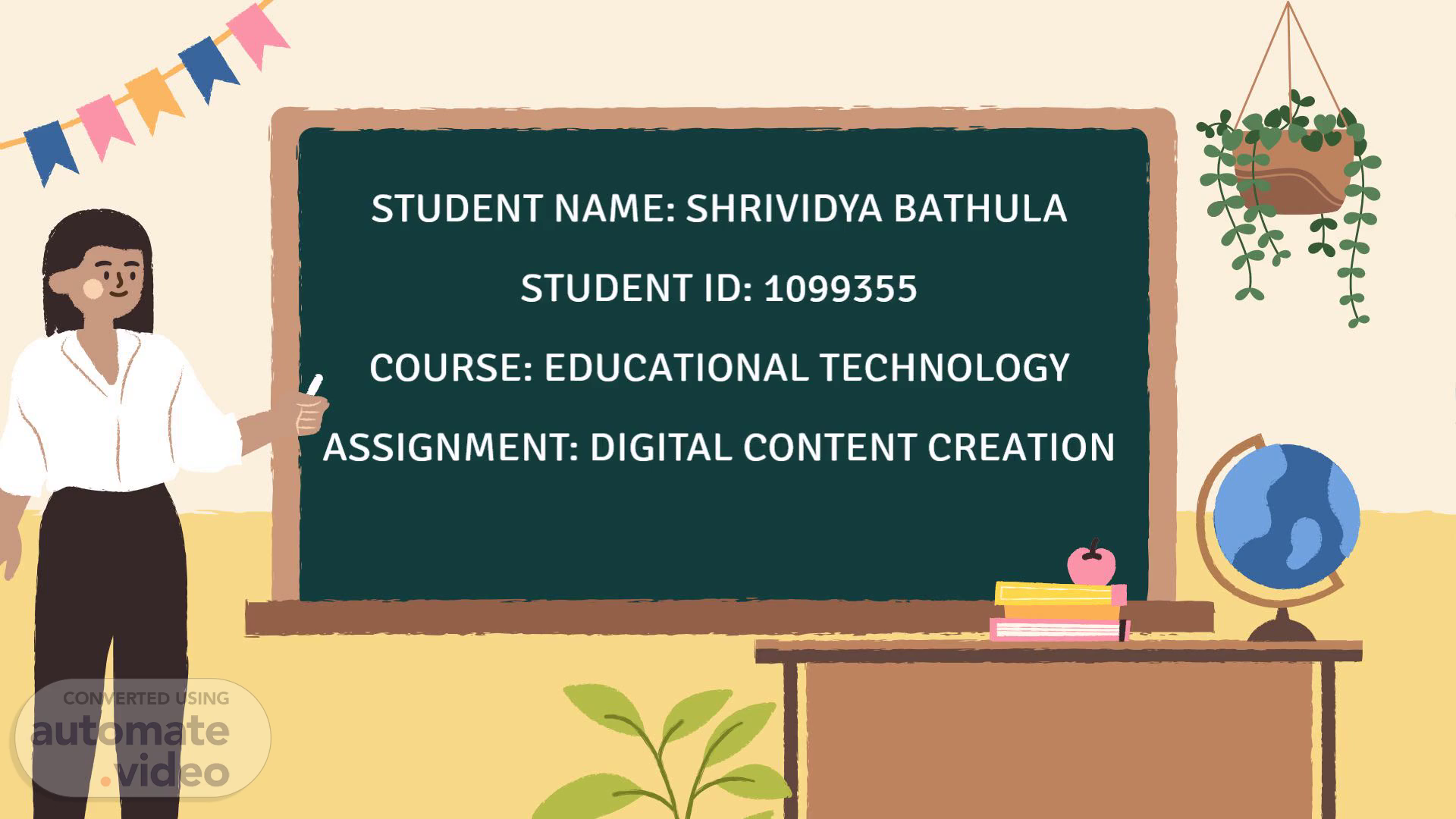Scene 1 (0s)
STUDENT NAME: SHRIVIDYA BATHULA STUDENT ID: 1099355 COURSE: EDUCATIONAL TECHNOLOGY ASSIGNMENT: DIGITAL CONTENT CREATION.
Scene 2 (10s)
LESSON PLAN: 30 MINUTES. 1) Introduction – 5 minutes 2) Explanation – 10 minutes 3) Guided Practice 10 minutes 4) Plenary- 5 minutes.
Scene 3 (20s)
[Audio] "Welcome to this lesson on Descriptive Writing! In this session, we'll explore how to bring our writing to life using vivid details, sensory language, and powerful descriptions.".
Scene 4 (39s)
[Audio] "Let's compare these two examples. Which one is more engaging? The second example is richer because it uses descriptive words like 'diligent gardeners' and 'thrives, blossoming with colours.' This is the power of descriptive writing—it makes the scene come alive!".
Scene 5 (1m 7s)
[Audio] What is Descriptive Writing? "Descriptive writing is a style that helps create vivid mental images. Instead of just stating facts, it brings scenes, characters, and emotions to life through rich details.".
Scene 6 (1m 23s)
[Audio] Key Elements of Descriptive Writing "To make writing more powerful, we use key elements like sensory details, figurative language, strong adjectives and verbs, and the 'Show, Don't Tell' technique. These elements help engage the reader's senses and emotions.".
Scene 7 (1m 46s)
[Audio] Crafting Vivid Descriptions "Vivid descriptions help readers experience the text. We achieve this by using strong verbs and adverbs to make our writing dynamic and engaging.".
Scene 8 (2m 2s)
[Audio] Using Strong Verbs "Instead of using basic verbs, we can enhance our writing with stronger alternatives. For example, instead of 'plant,' we can say 'buried the tiny seeds.' These subtle changes make descriptions more immersive.".
Scene 9 (2m 27s)
[Audio] Remember verb tenses? Verbs have tenses, which tell us when an action happened. The primary verb tenses are future, present, and past.
Scene 10 (2m 54s)
[Audio] Using Verb Tenses "Verb tenses indicate when an action occurs—past, present, or future. Changing the verb tense helps clarify the timeline of events in descriptive writing.".
Scene 11 (3m 17s)
[Audio] What are adverb groups? An adverb describes or modifies a verb, an adjective, or another adverb. But there are combinations of two or more words that function as an adverb or what we call adverb group.
Scene 12 (3m 38s)
[Audio] Using Adverb Groups "Adverbs modify verbs, adjectives, or other adverbs, adding depth to descriptions. Using adverb groups, like 'very carefully' or 'too easily,' helps to provide more detail about how an action is performed.".
Scene 13 (3m 59s)
[Audio] Show, Don't Tell "Instead of simply telling the reader something, we can 'show' it through descriptive details. For example, instead of saying 'The cake was delicious,' we can describe the taste, texture, and sensation it creates.".
Scene 14 (4m 16s)
[Audio] Common Mistakes to Avoid "Avoid overusing adjectives, clichés, and disorganized descriptions. Too many adjectives can overwhelm the reader, clichés lack originality, and disorganized writing makes it harder to follow.".
Scene 15 (4m 36s)
[Audio] Thank you for watching! Now, go ahead and present yourselves with confidence!".
Scene 16 (4m 46s)
Credits. ChatGPT – Script, Concept and Idea Canva – Template, Script, Editing automate.video - Syncing Video and Audio.
